In my earlier audiophile days; I asked my cousin Alan, an audiophile veteran, “What should I focus on first?” With a momentous thought, he quickly responded. “Power. Quality power, proper grounding, and vibration isolation.” A bit anticlimactic I must admit. He went on to explain how dirty input power can permeate into our systems and the importance of having the quickest path to ground. As an engineer, I totally understood and took that to heart. The PS Audio P10 Power Plant was one of my most impactful purchases. In the words of PS Audio’s Paul McGowan, “It’s a ten-second test.” You didn’t need to be an experienced listener or audiophile to notice the difference. Quality power equated to a commensurate improvement in musical enjoyment.
Over that time, I’ve had the chance to install two dedicated 10-gauge solid core Armorlite lines, upgrade my panel to a copper bar based one, and install some high-end outlets from PS Audio, Synergistic Research, and Furutech (for comparative purposes, of course). If you’re interested in upgrading your circuit, please see MSB Technology’s informative article here for more about installing dedicated circuits. This tweak will net you the most sonic gains in your system.
I’ve since upgraded from the PS Audio P10 to the Synergistic Research Powercell 12 SE (review coming). The last piece of my architecture was a solid grounding solution. I had toyed around with the idea installing some high-end grounding rods, and going through that whole bit but decided against. The soil outside is rock hard, digging up and properly installing a grounding rod with proper soil/mineral mix to help all of it would have been too much of an ordeal. Plus this isn’t a home I plan to be here forever.
In researching system based solutions, my interest started with the Gutwire Ultimate Ground Wire reviewed here. It was quite the revelation in how it seems to really just line everything up “just right.” It’s quite a high-value solution with great results. But you know when you have that little bite of something, and all it does is get whet your appetite and get you craving for more? That’s what I was feeling. And looking towards how I could scale; it would have been difficult to scale that solution…there are just so many outlets to go around! I then began to look for alternative solutions. I had a chance to see the Nordost QKORE solutions at RMAF 2017, but that wasn’t to my liking because you had to scale up to the QKORE6 at $4,999 for six devices maximum (1 power, 2 mono amps, and 3 components). Synergistic Research had a very convincing demo of their Active Ground Block SE. The Synergistic Research Active Ground Block SE was a scalable solution with grounding up to 44 devices! I can’t think of any other grounding products in the market with this level of convenience. I took the plunge and purchased the block.
Build & Features
The Active Ground Block SE builds on the base of the passive Grounding Block by tripling the size of the UEF ground filter and adding the capability to support almost 2.5 times the number of devices one can ground. Additionally, technology such as their ULF generator and Active EM Cells from their top of the line Powercell 12 UEF SE gets trickled down into the ground block. It’s also coupled with an upgraded Black fuse and a custom version of their Atmosphere Level 2 power cable that also allows you to tune the sound of the device to your liking (whether you want more detail or a warmer sound) via bullets. The unit also comes broken in for 5 days from the factory, but you’ll find continued improvements as it breaks into your system some more.
The unit is relatively light overall but has a dense center where you ground all your wires into a long copper bus bar. Use is pretty straightforward as the unit comes fully assembled. It’s a matter of hooking up your various devices via their ground cables, plugging in the power cable and turning on the Active EM cell switch. Depending on how your system is laid out, careful consideration should be made in regards to placement. Each HD Ground cable is 1.25 meters (~4 ft) in length so it will need to be relatively central. You’ll also need a little bit of height clearance as these cables will sprout out of the central base.
As always, Synergistic Research has some of the most in-depth production descriptions on their website.
The New Active Ground Block takes the award winning UEF Ground Filter from our original SR Ground Block and adds an active ULF (ultra low frequency) Field Generator, and on the SE model, a dedicated Active EM Cell as found in SR PowerCell line conditioners to supercharge the performance of every component in your system including Synergistic Research cables equipped with external grounding technology. Benefits include a noticeable increase in deep bass power and weight, a more holographic sound field, smoother high frequencies with greater extension and ‘air’, a more present and layered mid-range, increased tonal density with an apparent increase in resolution; it’s like going from a standard resolution Redbook file to Double DSD, the improvement is that dramatic. Nearly every aspect of system performance is transformed over the original; in fact, the difference between the new Active Ground Block and our original SR Ground Block is greater than the difference between the original Ground Block and no ground filter at all!
How it works: It all starts with 44 Star Ground Points to reduce component to component ground inductance. That’s 44 ground connections compared to the original’s 18. You can ground your entire system including all components, a full loom of SR cable shields, and even equipment racks, computer hard drives, absolutely everything in your system can be grounded to one SR Active Ground Block. Filtration is handled by a UEF Ground Filter that’s 3 times the size of the original’s UEF Ground Filter and this translates into 3 times the performance of the passive ground filter alone. To this we add an Active ULF Field generator as found in our PowerCell 12 UEF which re-clocks high-frequency ground noise to the Earth’s Schumann resonance as well as noise generated inside connected components at the circuit level, so each connected component’s performance is fundamentally transformed at the source. And the Active Ground Filter is the only ground filter in the world to use such a filter mechanism for a performance unlike anything you’ve ever experienced.
Stepping up to the Active Ground Block SE replaces the standard model’s passive Quantum Black Power Cord with a specially modified Atmosphere Level 2 Active power cord equipped with Galileo UEF Quantum Gold and Silver Filters that give you two distinctive sonic options to the overall sound of your system. With the included Galileo UEF filters you can perfectly tailor the sound of the Active Ground Block SE to match your system, or leave the Galileo UEF Filters disconnected, the choice is yours. Lastly, the SE version has an Active EM Cell similar to the EM Cells found in our PowerCell 8 power conditioners to actively remove noise from ground for even blacker backgrounds, with improved dynamics, and finesse.
Setup
My setup is as follows:
- Power Conditioner:
- Synergistic Research Powercell 12 UEF SE
- Source:
- Lumin S1 Streamer
- Ethernet: SOtM dBL-CAT7 ethernet cable
- Power: Dynamic Designs Challenge AE15 Digital power cable
- Isolation: Synergistic Research Tranquility Base UEF
- Lumin S1 Streamer
- Preamplifier:
- PS Audio BHK Signature Preamp
- Interconnects: Audience Au 24 SX XLR cables
- Power: Shunyata Research Alpha Ztron Analog power cable
- PS Audio BHK Signature Preamp
- Amplifier:
- PS Audio BHK Signature 250 Stereo Amp
- Interconnects: High Fidelity Cables Reveal XLR cables
- Power: Synergistic Research Atmosphere Level 3 High Current power cable.
- PS Audio BHK Signature 250 Stereo Amp
- Speakers:
- B&W 804D2
- Speaker cables: DanaCable Sapphire MK.2 speaker cables
- B&W 804D2
- Network:
- NAS: WD MyCloud EX2
- Router/Switch: TP-Link CR1900 Cable Modem Router
- Ethernet: SOtM dCBL-CAT7
- Power: SOtM SPS-500 Power Supply
For the purposes of this review, the Active Ground Block SE has been hooked up to its own dedicated circuit as described above, connected with a PS Audio Power Port Premier outlet. The modified Atmosphere Level 2 cable that it comes with is outfitted with either a liquid / warm gold tuning bullet.
These were the components and the mechanism used to ground them:
- Lumin S1 via RCA HD Ground Cable (We tried a spade connection built as a ground binding post into the S1, but we found the results were better with the RCA)
- PS Audio BHK Signature Preamp via RCA HD Ground Cable
- PS Audio BHK Signature Stereo Amp via Spade HD Ground Cable (We ended up using a spade because originally intended RCA HD Ground Cable went to the Lumin)
- TP-Link CR1900 Cable Modem Router via Ethernet HD Ground Cable
- Western Digital My Cloud EX2 via USB HD Ground Cable
- Synergistic Research Tranquility Base UEF via Mini-BFA HD Ground Cable
- We wanted to note that we originally did some testing with the PS Audio P10 Power Regenerator and used the Spade HD Ground Cable to screw into the chassis and found significant improvements through that.
Tuning Bullets
Like many of Synergistic Research’s products, you’re given the capability to tune to your liking. The concept of one-size-fits-all doesn’t apply to audio and we appreciate this option.
We found the gold (the shinier) bullet to have a very good balance of tone, dynamics, and texture. Pick your poison!
Gold
- Surprisingly quiet. A natural sense of space.
- Better outlines and soundstage focus
- Improved dynamics
- A nice blend of what I would expect from a silver (detailed) bullet and a gold (warmer) bullet.
Silver
- Smooth, energetic, with no grain
- Imaging is better than no bullet
- Cooler sound
No Bullet
- A lighter and less enthusiastic low-end
- Smooth but less refined from having any of the other bullets
- Not as dynamic as the silver
- A bit more grey/neutral sounding
Listening Notes & Observations
The sonic improvement the Active Ground Block SE bestowed upon the system was immediately apparent and wasn’t subtle. The quieter noise floor was expected but is even more pitch black in its quietness. Where previously you can hear background voices being grouped together, you can now identify them individually and get a sense of space between them with the way they are standing in a slight diagonal line stretch to the back of the soundstage. The authority and texture of percussion are clear and vivid. The separation and resolution of the vocals and other instruments now really stand out without losing the warmth and musical nature of all the pieces coming together. I also wanted to note that one of the most impressive elements about the Active Ground Block SE is how beautiful and engaging the music is at even very low volumes. I’ve turned my PS Audio BHK Signature Preamp down to volume level 1 and have been amazed at the detail I can still hear. In some ways, it’s even more engaging because you can’t help but appreciate how the little details and musicality of the tracks come through.
Here are some listening notes for specific songs:
Harry Belafonte – Live at the Carnegie Hall – The Marching Saints: Great live track, male vocals, and the different instruments.
- The individual claps of the crowd and steadying beat of the bonga is vivid and crisp.
- When Mr. Belafonte starts his vocals, the resolution in movement and acoustic warmth are quite apparent. As if he’s stepping around in your living room.
- You can visualize the individual backup singers and even hear how they are standing in diagonally off to the left and back half of the stage in a slight curvature.
- Disconnecting the Active Ground Block SE
- The separation and detailed is lost in the elements mentioned above. The triangle that paces in the back sound shy and without the sparkly ting. The background singers seem to be one homogeneous “set” rather than a collection of harmonizing vocals.
Pentatonix – A Pentatonix Christmas – Hallelujah: Always a soft spot of acapella and this is one of my favorites.
- The hallow nature of this track really shows itself here. It’s as if the room expands itself another two feet in each direction – height, depth, and width. It allows those vocals to just envelop and display that reverb like you’re in an old cathedral.
- The bass drop from the acapella goes lower and deeper with more graduated refinement.
- The separation of the voices become very apparent when Kristin Maldonado comes in halfway through the song. You can hear here come forward a bit and really standout in her solo.
- Without the Active Ground Block SE
- Everything seems a bit more veiled. The hums come across more like umms, and the moments where all the singers hold their breaths for a bit and go completely pitch black does not have that silent impact so much.
Al Di Meola, John McLaughlin, and Paco de Lucía – Friday Night in San Francisco – Mediterranean Sundance: I love the strings and live nature of this track.
- The continuity in which the plucks on the string rolls from left to right and back in that first minute is so distinctive and yet smooth the way it dances back and forth.
- When the crowd just kicks in a bit there, you’re welcomed with a very physical sense of how the Warfield Theatre is laid out and exactly how low that pit is.
- Those key moments during the chorus where there is a slight pause in the music as the rift dies off; you really feel the long decay and reverb in the guitar traversing through the chilly San Francisco air.
- Without the Active Ground Block SE
- Strings are just a bit less defined. The ground is again more reserved, and the decays and reverb feel a bit shunted. Just by the tiniest fraction of a second, but clearly noticeable.
Anette Askvik – Liberty: One of my favorite tracks for atmospherics, piano, and imagery.
- There’s this creaking noise as if something is creeping in your attic and straining the old floorboards. The 3D nature of that sound really comes up. The creek almost has a curvature type depth to it.
- The legato on each piano key each has their own nature with each key and note and really carries with each keystroke.
- A minute or so in, there’s the sound of a bucket that rolls around as if it had just fallen over. It’s a detail that one might have noticed before and become something where you visualize the exact angle it’s rolling swirls as it’s just about to fall.
- The vocals just separate itself from the other instruments because of that lower noise floor. It really adds to the hallowed nature of the track.
- Without the Active Ground Block SE
- The details of those little creaks and rolls are just less detailed in their space and height. The legato between each piano stroke loses it’s identity and sounds a bit more generic in its tone. The nature of the vocals are there, you just get a little less of that breathtaking silence and separation with the all those things going on behind it.
vs Synergistic Research Passive Grounding Block
Before obtaining an Active Block SE, I started with the SR passive Grounding Block ($595 USD) on a near-field system with the SOtM Trifecta and Omega Compact Alnico Speakers (driven directly by Chord DAVE). The passive Grounding Block worked wonders as far as noise floor and rounding out the edges for a fuller and more palpable sound. The soundstage also deepens noticeably.
To illustrate the impact of the passive block, I had to unplug an HD grounding cable from the block to take a few photos but forgot to reattach it. After a few minutes of listening, I knew something was off with the system. Having forgotten about the cable, once I plugged the USB HD grounding cable back in (sMS-200/USB), the flatness went away and I was once again presented with a well-textured sound. A/B testing was as easy as unplugging/replugging the cables. It was more than an appreciable difference.
The HD grounding cables along with the passive grounding block easily became an essential component of the system. I quickly realized, these are things you can’t fix with components or cables.
Switching to the Active Ground Block SE in this near-field setup, these were my findings vs the larger setup:
- The SE has a more elevated tone and is much better at presenting textural nuances and reverberation cues in the recording. With the passive block, the tonality seems to be more warm-blooded at the expense of a fuzzier and flatter soundscape.
- The passive Ground Block doesn’t have the proper individual outlines for piano notes and or the refined dynamic impact of percussion instruments.
- The SE is cleaner, quieter, more resolving, and better focused. It just has more refinement in the details. It’s tonally uplifted in the near-field setup, which isn’t a big surprise given the elevated tone of the SOtM Trifecta but sounds lusher and richer on the B&Ws.
- Separation, layering, and isolation of instruments are much better presented on the Active Block SE.
- The Active Block SE provides a much wider/deeper soundstage, more height, and a larger image.
- Bass on the AGB SE is much tighter and there’s more individualism across drums and cymbals. Fantastic image focus. A very clean and airy sound with a low-end that hits your chest with precision and authority.
- The passive Ground Block has the blending of drums and piano and cymbals and brass, just not individualized. The SE has no problems with this. You could hear the individual drum rolls and performer positions in the soundstage. The AGB SE just does so many things right, it’s hard to deny how important this component is.
On the large 2-channel system, there was no contest. the Active Ground Block SE outperforms the passive Ground Block by a large margin. The AGB SE is much quieter, more open/dynamic, and overall just more musically fleshed out. The passive sounds more veiled and compressed in comparison. Timbre accuracy is also better with the SE in this system. I would be completely happy with the passive Grounding Block on the near-fields but I wouldn’t be able to live with them on the B&W rig.
Components that benefited the most from the passive/active SE grounding blocks:
- Ethernet: The ethernet HD ground cable worked well with our TP-Link router/modem in the B&W setup but came off a little bright with the Trifecta’s D-Link switch.
- SOtM tX-USBultra (BNC): Seems to be much better than grounding the USB port. The HD grounding cable connected to the BNC of the tX-USBultra USB conditioner provided enormous gains with the passive block. It’ll drop the noise floor considerably and provide better outlining and focus. Most importantly it adds body and removes this annoying glare I thought was caused by other components in the system. I suspect it would benefit external master clocks in the same way if you’re connecting one to the tX.
- Gigabyte BRIX (USB): Having the USB HD grounding cable connected to the Gigabyte BRIX Roon Server was beneficial using the passive Grounding Block but the AGE SE didn’t like it as much and sounded much better without it.
- SOtM sMS-200 (USB): The sMS-200 on the other hand, benefits enormously (more than the tX) from both the passive Grounding Block and AGE SE (with the SE sounding more focused, detailed, and cleaner). Without the passive block, everything just flattens, sonically smears, and acoustic cues are muted. I would recommend trying out the passive Grounding Block to start for SOtM owners. It’ll reduce some of the haze.
- Chord DAVE (AES/EBU) – Oddly, I couldn’t hear any differences with BNC which is the recommended grounding point on the DAVE. With the XLR HD grounding cable and passive/SE block, the sound is more earthy, condensed, but also more lifelike in its body. It sounds more “contained” and controlled. Grounding the DAVE removes some of the edges from the music and promotes a more natural and smooth sound.
- PS Audio BHK 250 amplifier – One of those night & day differences. A lot more controlled and tighter bass with a lower noise floor and more air up top. The gains were enormous! I can’t believe I’ve been listening to this amplifier without it being grounded this entire time.
- PS Audio P10 Power Regenerator – I did some testing with the P10 plugged in too as well. While the device does not have a grounding post, a spade was used to ground to a bolt under the chassis. The impact was instantaneous along the lines of the BHK 250 amplifier. It was one of those things I could already hear the difference as I was bending down to plug the device in. Do note, the P10 quite heavy so you may need an extra hand to screw the spade in while you lift it up.
- Chord Blu Mk.2 M-Scaler: Hooking up an HD ground to the BNC input connector improved timbre and overall tonal variations. Without either grounding block, the sound was thin and a bit sharp. Grounding the Blu2 adds body and warmth to the music. I would recommend BluDAVE owners to start with the passive Ground Block.
Final Thoughts
Keep in mind, just because the component has a grounding post, doesn’t mean it’ll sound better by being grounding at that position. For example, we’ve found that grounding the Lumin S1 with a RCA HD grounding cable sounded better than the spade on the grounding post. Some servers will not like the USB grounds as they’ll try to treat them as USB devices. You’ll have to try for yourself and see what works for you.
You can probably surmise at this point that I’m a huge fan of a solid and scalable grounding solution. I almost consider it a foundational piece that can impact all system as a whole. If you were to say that not having a grounding solution is a 0; and having the Synergistic Active Ground Block SE an ultimate solution at +100 pts, the sonic impact of the Gutwire Ultimate Ground Cable scoots in as a tremendous value with around +30. Unfortunately, that’s only for a single device which is a bit of deal-breaker for us (and many others with more involved setups).
The Active Ground Block SE is up to the task of taking care of all your grounding needs, albeit at a premium. It isn’t a cheap solution per say ($2,995 for the US version); but at the same time, it’s a scalable solution that really outperforms that price tag. If you’re someone who has already invested in an assortment of high-end equipment, the effects of grounding those preamps, amplifiers, servers, cables, racks, NAS, and sources have a more profound improvement than you would think. The Synergistic Research grounding solutions will allow you to ground anything you’d want to add in the future, in one centralized place.
I now have 14 components connected to the Synergistic Research Active Ground Block SE. While some of these cables make a substantial difference and some make an appreciable difference, they all work well collectively in improving tonal gestalt and elevating musical enjoyment.
The Synergistic Research passive Grounding Block and Active Ground Block SE have become an indispensable part of our systems. It improves the sound in a way where component and cable swaps just can’t mitigate. That’s because proper grounding is a foundational element and is an essential part of any Hi-Fi system. If you want to maximize the potential of your system and experience fresh musical highs, we have no hesitation in recommending either of these Synergistic Research grounding blocks.


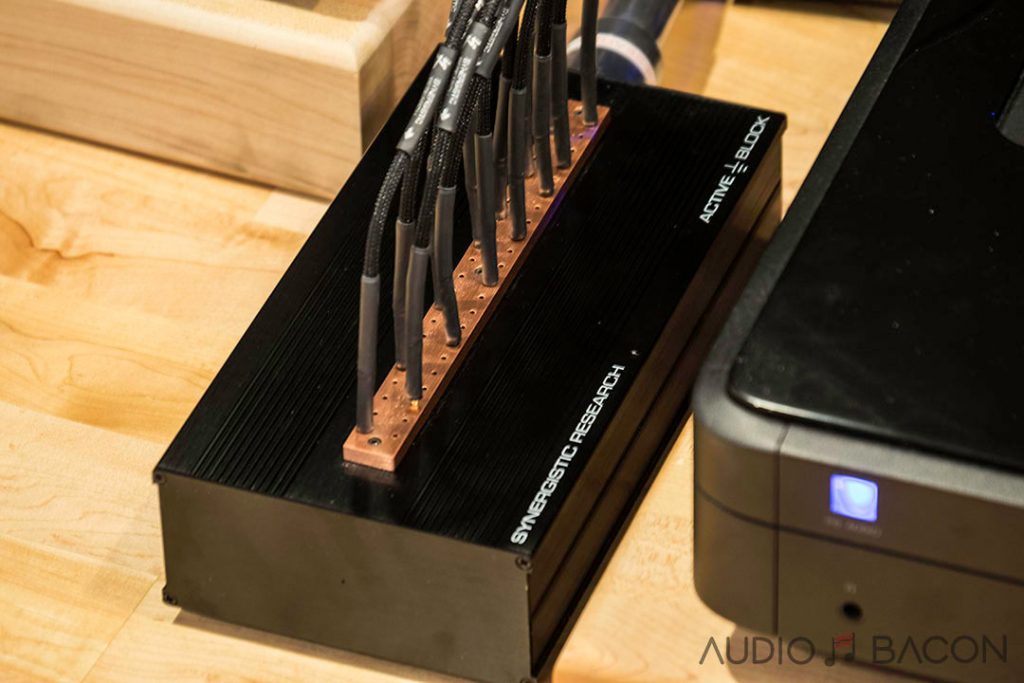
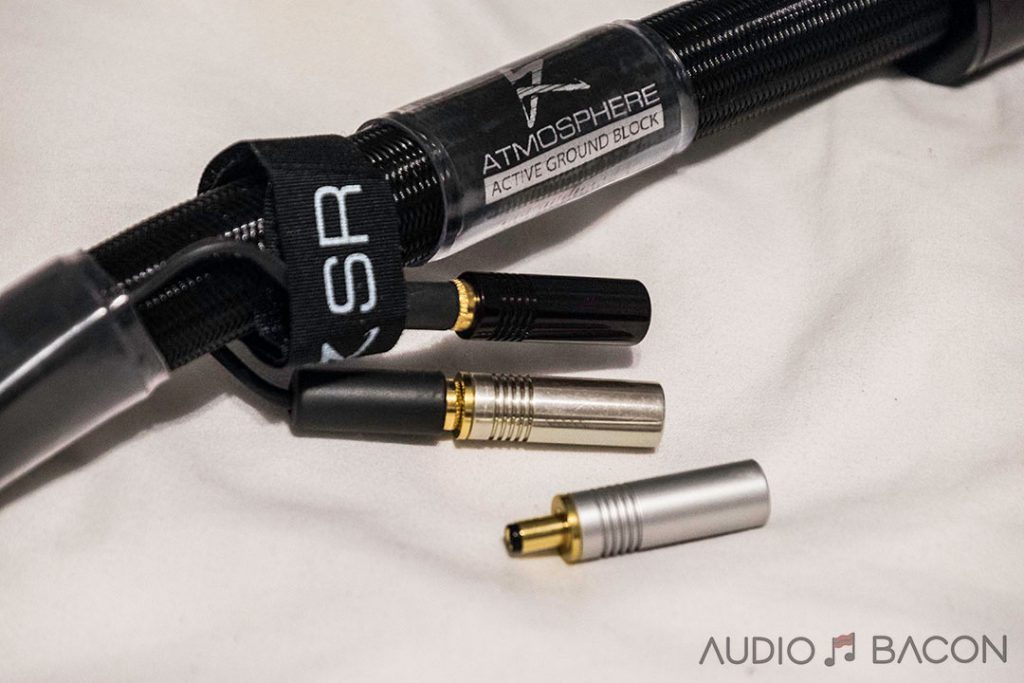
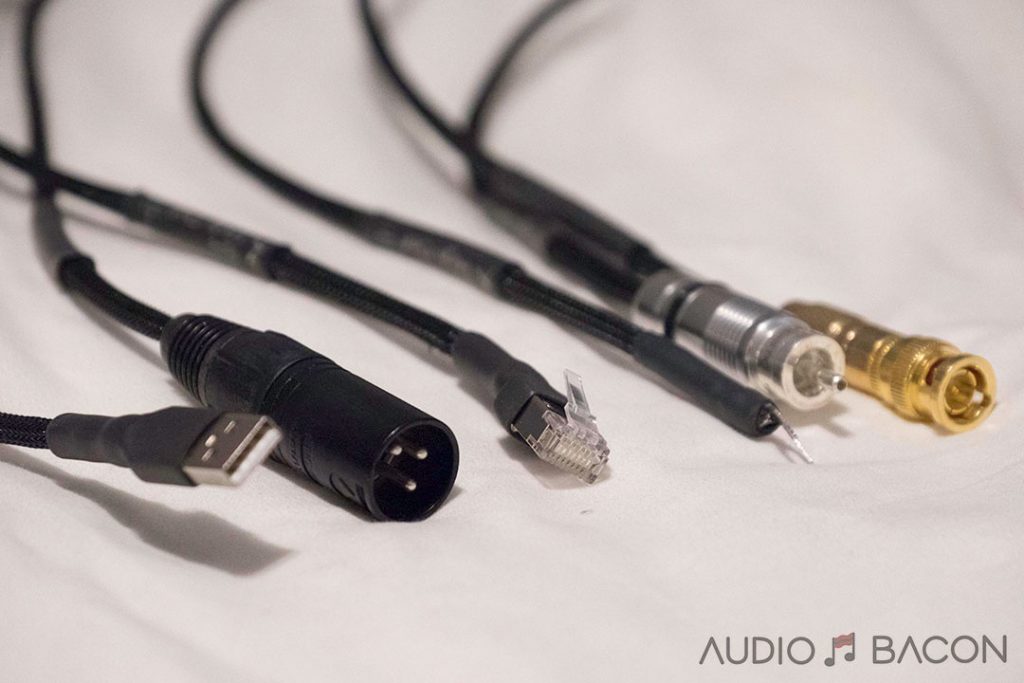

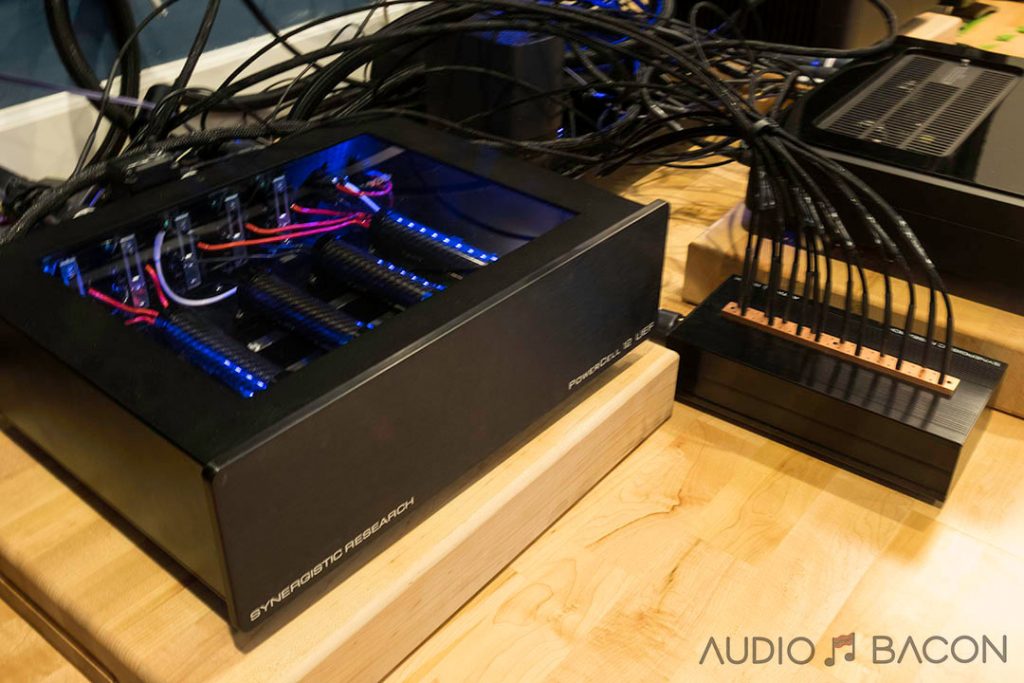

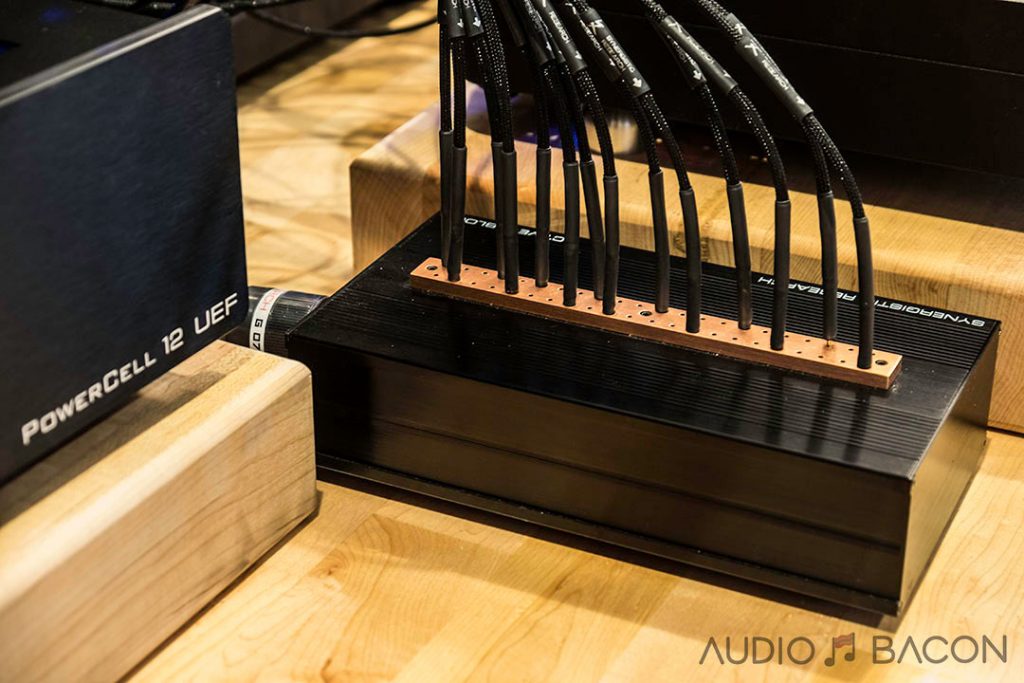



:format(jpeg):mode_rgb():quality(90)/discogs-images/R-4901612-1378914036-3582.jpeg.jpg)
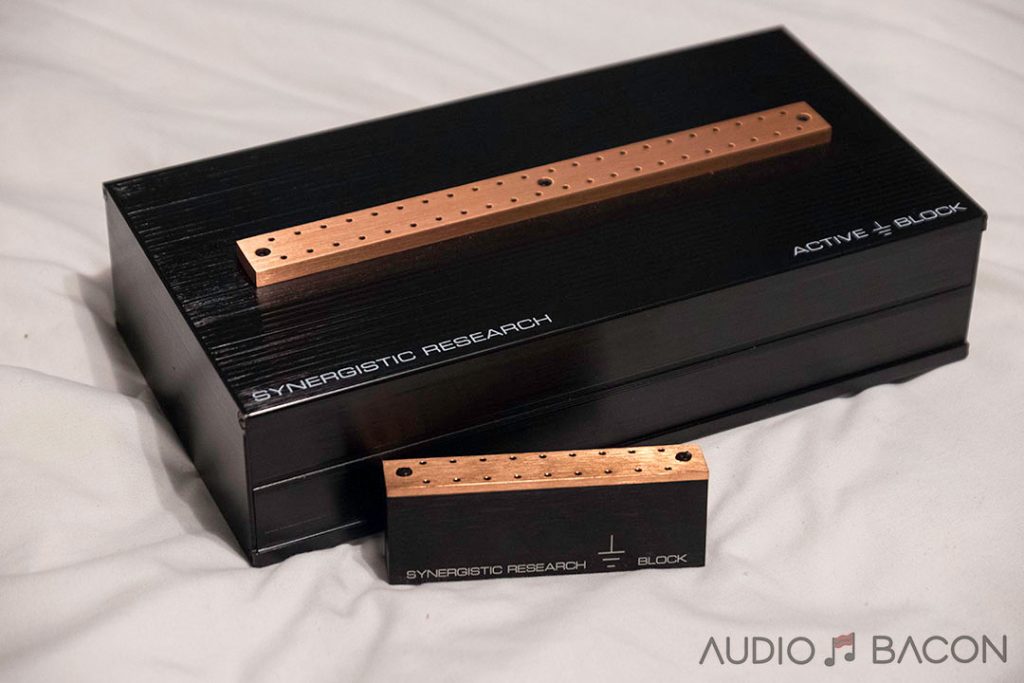
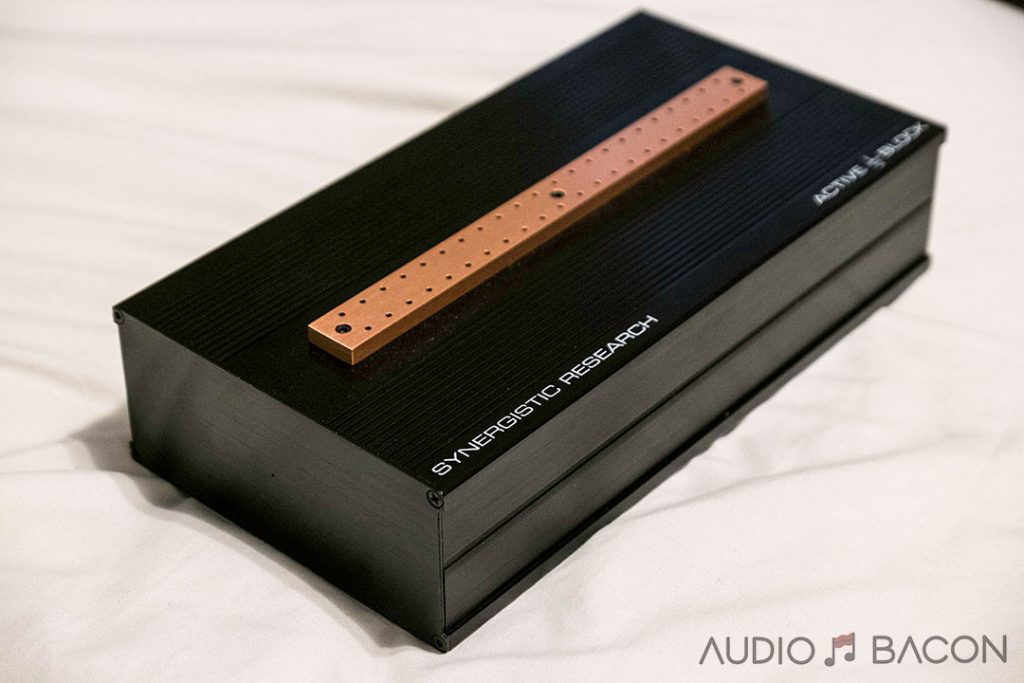
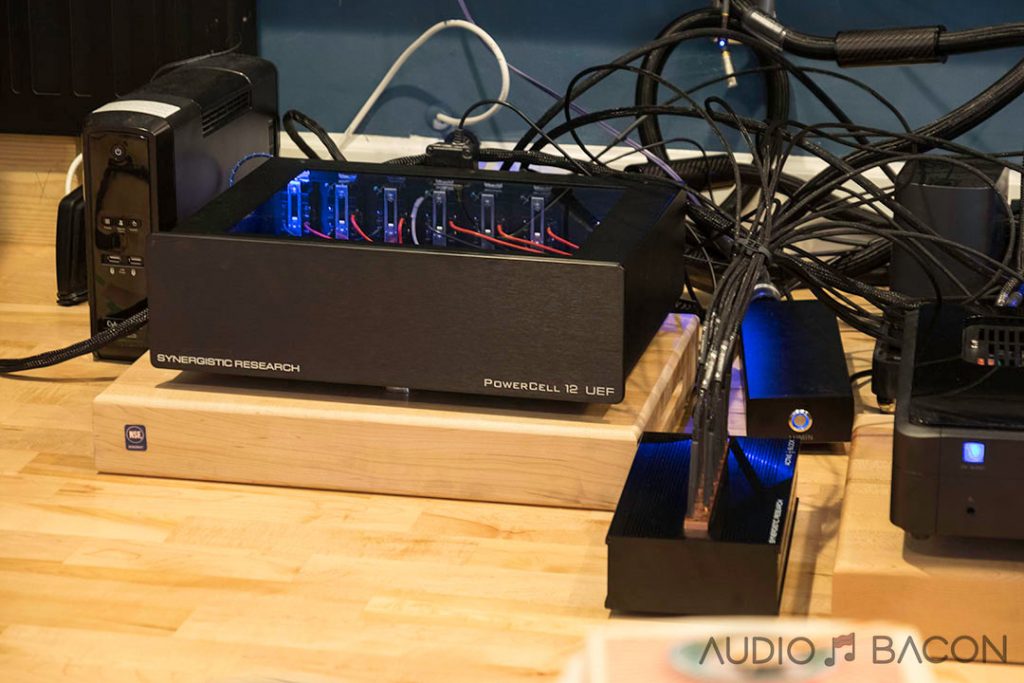

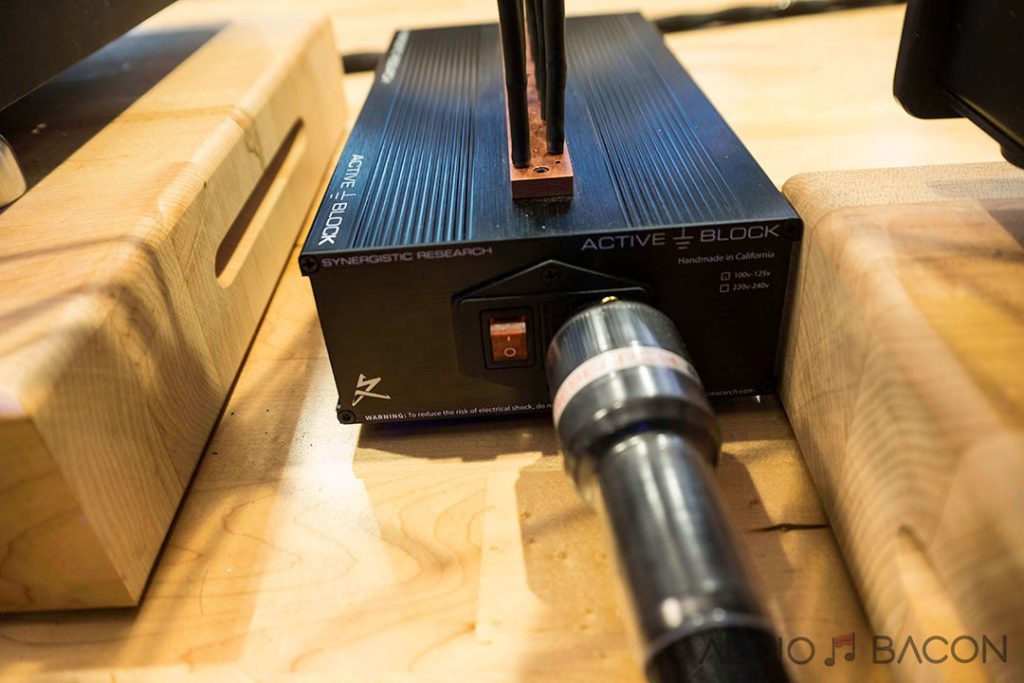



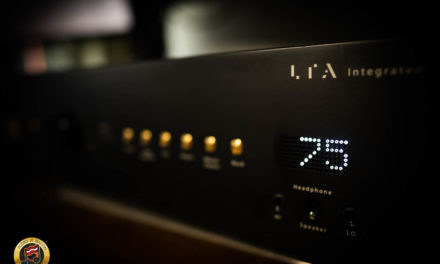
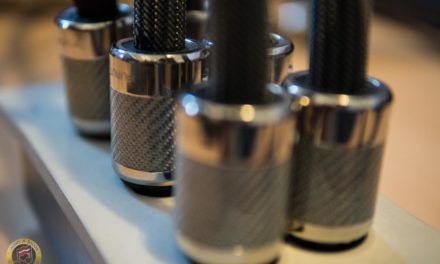
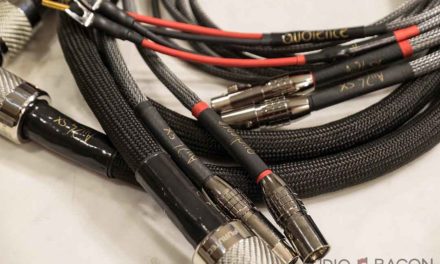
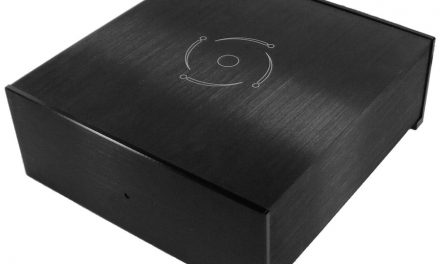

Another thought-provoking review Jay. The importance of grounding, and RFI/EMI control in general, seems to be coming of age now.
I’ve been trying a DIY alternative to Gutwire Ulimate (which has an astronomical mark-up in the UK (£699 vs US$399, only partly justified by a Furutech UK mains plug). My DIY solution was to cut up a spare (low cost) interconnect, connect the gound pin to the mains plug Earth pin, and lots of ferrites to control RFI. This is temporary just to explore the potential. Well, I heard no significant difference on my DAVE’s RCA or XLR analogue connectors, but DID hear an improvement on DAVE’s digital XLR input. Which seems to agree with your findings, although in my case the improvement was primarily in clarity and dynamics, rather than smoothness. I didn’t have a BNC cable to try.
I find it facinating that I could get any improvement at all with such a simple cheap cable – considering I already have an Audience TSS, microRendu, ISORegen, loads and loads of ferrites, plus DAVE itself, all claiming to be brilliant at reducing noise. I’m sure that a better solution is possible, but that Gutwire UK markup is really offputting. If in my target minimalist headphone-only system, I end up with only 2-3 components (including DAVE) that need grounding, which solution do you think best fits?
Hey Richard, although I did contribute to the review, it was written by our new guest reviewer, Siao Jer. That said, I also didn’t hear much of a difference from the analog connectors. I think the reason why the XLR input connector works well is due to it being directly connected to the chassis whereas the BNC might be connected to the ground on the circuit board.
My suggestion would be to invest in the SR passive Ground Block. As a sanity check yesterday, I unplugged the passive ground block from the system. It was pretty depressing and I feel it’s worth every penny. Another option would be Setchi D2: https://www.taikoaudio.shop/Setchi-D2-Grounding-Block but that would be a for a single device. They do look pretty sexy though.
Thank you for the recommendations Jay. I was already thinking that the SR passive block may be more suitable for my dimensionally small system. Although I guess the cumalative HD grounding cables may quickly overtake the cost of the main unit.
I’m also toying with a partial DIY idea, started when I saw that the XLR plug adds an unreasonable $140 to the very reasonable $369 (corrected figure) Gutwire Ultimate: The idea is to buy the Ultimate from the US (e.g cable company), with a spade connector, and connect this to a sturdy binding post, than connect short DIY links star-like from each of my main components to the same binding post. The other end to bypass my UK socket (a variety of ways for this). Ends up with a compact, low cost solution, but no idea how that might compare soundwise with a complete passive SR solution.
Hi
Regarding grounding the DAVE Dac:
Please excuse my ignorance but I thought DAVE’s earth pin is continuous with the PCB ground planes?
https://www.head-fi.org/threads/chord-electronics-dave.766517/page-399#post-13070815
I don’t at all question the improvements people are hearing but I’m just trying to understand possible mechanisms for this improved SQ. If Dave’s PCB planes are already grounded, I’m trying to understand how a 2nd grounding point/path for Dave can help (and not actually hurt).
I thought the more (redundant) grounding paths you add to a system, the more potential for issues – ground / leakage current loops / RF pick-up by cables
Are you aware of how the mechanisms that a 2nd ground path with Dave actually help and don’t hurt with a product like this?
Cheers
When you connect your amplifier to your DAVE via an interconnect, technically a ground loop has already formed. However, when equipment is properly designed, there won’t be any ground hums. When there isn’t a hum in the system, a product like the Gutwire or the SR blocks won’t introduce an additional hum but may provide a quicker/shorter/cleaner path from the circuit board to ground, which may improve sound quality. Apparently, the type of “earthing” material a component is grounded to matters as well. Also, some circuit boards aren’t connected to safety ground (only signal ground) or have electrical components (capacitors, diodes, etc) in the path to ground which might cause the audible differences.
Thanks Jay. In the case of Dave, as per my link, it’s PCB ground planes are connected to chassis and the AC earth pin.
I completely get you regarding path of least resistance but I would expect that given all the (active) filtering components in this newly added (secondary) grounding path that this is higher impendance than Dave’s mains grounded path? It would be cool if someone were able to measure and compare resistance with Dave’s grounded PCB path.
Also, did you isolate just grounding Dave with this product or ground everything that you mentioned in your review at the same time? i.e there could be box to box interactions happening.
Also creating new leakage current loops by adding a second grounding path (since Dave already has one) doesn’t always result in audible hum. It may affect SQ in different ways (according to basic understandings).
Oops typo. “according to MY basic understands”. I am not an expert at all.
The article mentions the Gutwire Cable being 30% of what the SR Active Grounding Block produces. I assume that is the 1 cable being compared to the SR being connected to each component.
Can you clarify this comparison?
I ask because I use Gutwire all over my system (6 cables). The improvement on each component has been huge in my experience. I went with Gutwire because I have the additional outlets needed and my amplifier is a long ways from my front end, therefore I would need a very long grounding cable or two separate units (if that works to break them out). Either way the Gutwire was more cost effective than the SR in my application.
Thanks
Hi Lestes, thanks for that question.
In making that comparison 30% notion, we did have two Gutwires – one being the Perfect Ground (on the amp) and the other being the Ultimate Ground (on the streamer/DAC unit) in the setup. We could only test with two units as we only have two dedicated circuits with two outlets each. That 30% note was also made when we had an initial setup with the ground block having only five devices grounded– The streamer/dac, preamp, amp, power regenerator, and router via ethernet.
Hope that clarifies. One thing to note regarding the grounding cables – they can be extended by daisy chaining some of the grounding cables that come with the unit. In a secondary visit with SR, they hooked up an Amtosphere XL4 which was off on the corner wall and needed the stock grounding cables to extend reach accordingly.
Hope that clarifies.
Siao
As a current Ps Audio P10 owner would you choose to buy this grounding unit and keep the P10, or selling the P10 and putting the money towards the Synergistic Research Powercell 12 SE and going without the Active Ground Block SE all together? I know using both would be preferred but this is if you only had the resources to buy one or the other?
If you’re aiming for more resolution, soundstage, and ultimate clarity, I would go for the Powercell 12 SE. It is also the quietest power conditioner we’ve heard so far. If you already enjoy the tonality of your system and just one more sonic roundness and refinement, go for the AGB.
To that note – I would like to point out that the Powercell 12 SE also includes a custom built Atmosphere Level 3 power cable and their Quantum Black outlet… so you would also potentially selling your power cable and outlet too. And that would be a consideration in balancing your budget as well.
Which port did you find optimal for grounding the sMS-200?
Not sure I was able to discern a difference between the two USB ports. Try both and see which sounds better 🙂
Was wondering how your system improved when you switched to from an Aluminum bus bar to a Copper bus bar electrical box. How does that change compare to adding the passive SR GB?
Is this review serious, or an April fools joke? I am asking honestly. Have you ever considered that the acoustics in your room, and lack of treatment, explains why you think you hear these “power” products make a difference?
Hi Ethan –
Jim Smith notes that it’s the 2nd most important component in the system after the speakers itself. And I absolutely agree with him. It’s one of the first things I pursued before buying much equipment. Worked with GIK Acoustics on some design principles– and off that we incorporated their soffits along the left and right wall-ceiling corners, acoustic sciences iso-thermal tube traps, and a few other pieces. We’re current listening to some of Synergistic’s Room Acoustic related products as well and will be forthcoming in our notes for those as well.
Siao
The improvement from adding acoustic treatment is readily apparent and easy to measure. I do see some tube traps now, and diffusers in a strange place (behind the speakers). Have you ever measured your system with and without these “power” products connected? I’ve never been able to measure (or hear) a difference, so I’m always surprised when someone says adding a power product improved the sound quality. If a power product really did anything, such as lower the noise floor, that would readily show up in a standard measurement. I’m curious to know if you ever measured that.
Hi Ethan,
The diffusers are actually dual function as a trap with some thick 4″ material behind it… they were placed there mainly to address a little node that appeared in the measurements… In calibrating the placement, ultimate we use the mic / REW tool has a guide to help us get 80,90% of the way there, and the very last bit was tweaked with old-fashioned trial and error to really dial things in.
With regards to measurements, my understanding/use of the REW tool is somewhat limited in measuring response, decay, and phase… I’m not 100% sure how I would go about reading those charts for things we observed in the subjective portion of the review. Things like the way a piano note rolls off, or the imaging of an effect, detail or warmth, soundstage, etc. If there’s a guide out there that can help illustrate or help what piece of the measurement can translate to some of those type of observations, we would be interested in checking that out.
I’m glad you use REW! It’s an excellent program, and it can show *all* changes to the sound in a room. So that would be a good way to verify that adding a “power” product like the Ground Block makes a difference, and isn’t just expectation or placebo etc. The way a piano note decays would be shown in a waterfall plot of the room’s decay at all frequencies. Imaging and soundstage are more perceptual, but anything that affects those psychoacoustic effects will also show in an REW sweep.
Besides the raw response and ringing / ambience decay times, you’d look at the Impulse Response graph. Any change in reflection strength or timing, which define imaging, will show up there. However, for all Before / After type measurements it’s critical that the microphone not be moved even 1/4 inch in any direction. REW has a delay feature that lets you click to start the sweep, then step out of the way before the sweep actually begins. So best is to start the sweep, then move WAY out of the way or even leave the room. That avoids the two sweeps in a row (Before, then After) showing different results even though the sound from the speakers didn’t change.
My main interest in pressing for details here relates to the use of power products. Other than an RFI filter that can avoid obvious clicks and pops, I’ve never seen a power product do anything useful. In particular, I see claims of “increased dynamics” above, which implies that the background noise is reduced. This too is easily measured either with REW or a decent quality SPL meter. Or even a basic voltmeter across the speaker terminals. I’m curious, and this is a serious question: Suppose you use REW to measure your system with and without one of these power products, or with different wires for that matter, and found no difference. Would you conclude that your perception of the improvement is erroneous and the sound in fact did not change?
Thanks for entertaining my questions. I really mean that.
Hey Ethan,
Just wanted to get back to you and say thanks for the details on that. Things have gotten a little busy on the non-audio gear side of life with work travels so I haven’t had a chance to make those measurements yet, but I hope to do so in the next few weeks and will reach out to you to discuss. I’m interested in learning more.
While tools & measurements can get me part of the story, I can only report what we hear and our observations. I do believe our human ears are very sensitive and can pick up things we may or may not know how to accurately represent in measurements. It’s just a bit over 10 years ago, but one of my MS EE courses dove into an area of engineering + music and we were barely discovering how to modify how music notes were played in a piano piece to “create” a certain mood/feeling even though the song itself was the same set of notes on paper.
Any case, I’m rambling a bit. Hope to chat soon.
Siao
To be clear, there is nothing – I repeat NOTHING – that ears can hear but science doesn’t know how to measure. That’s a myth perpetuated by people who sell what I call “placebo-based” products. This particular aspect of audio is my specialty, and I promise you it’s easy to prove. The best proof is the Null Test, and the text below is from my Audio Expert book. I’ll be glad to discuss this further when you’re ready, and you’re welcome to email me from my home page http://ethanwiner.com/ rather than post here which I might miss. So here’s the proof that audio engineers are missing nothing, with a link at the end to a YouTube video:
A null test is absolute and 100 percent conclusive. The beauty of the null test is that it’s absolute, and shows all differences between two audio files or signals, including distortion or other artifacts you may not have thought to look for when measuring.
The premise of a null test is to subtract two audio signals to see what remains. If nothing remains, then the signals are by definition identical. If someone claims playing Wave files from one hard drive sounds different than playing them from another hard drive, a null test will tell you for certain whether or not that’s true. Subtracting is done by reversing the polarity of one source, then mixing it with the other. If the result is total silence when viewed on a wide-range VU meter that displays down to total silence (also called digital black), then you can be confident that both sources are identical.
Further, if a residual difference signal does remain, the residual level shows the extent of the difference. You can also assess the nature of a residual difference either by ear or with an FFT analysis. For example, if one source has a slight low-frequency roll-off, the residual after nulling will contain only low frequencies. And if one source adds a strong third harmonic distortion component to a sine wave test tone, then the difference signal will contain only that added content.
This portion of my AES Audio Myths Workshop video explains more and shows some examples:
http://www.youtube.com/watch?v=BYTlN6wjcvQ&t=53m39s
Hi,
I asked a question about changing the electrical panel bus bar from aluminum to copper. This can be a considerable expense. I was quoted $1850 by an electrician. How does this change compare with adding the SR Acitive Grounding Block SE. Is it a significant change worth the expense? Can you describe the improvement briefly? My email is mgirardi86279@gmail.com.
Thanks,
Mike Girardi
Senior Editor for The Stereotimes
Hi Mike,
It’s hard for me to quantify the bus bar on its own because I had the work done to install that, apply some highly conductive silver paste, and install two dedicated 10 awg armorlite MC lines at the same time. I will say that as a general note from observations of how the Synergistic Research product performs from one household to another; I will say it’s very important to have a solid base from a power circuit/home infrastructure perspective. The SR gear seems a little more sensitive to a poor circuit, making it sound a little out of balance with the warmth / meat & body side of things. Hope that offers some insight.
Also – that $1850 sounded high. My electrician charged me $500 for labor to two circuits and replacing the bus bar. He’s a family friend, so there’s a small discount there, but $1850 sounds steep.
Hope that helps,
Siao
Ethan:
Since you believe that everything is measurable, where were you in 1982 when Sony and Philips said that their first CD players provided “perfect sound forever”? Do your Real Trap customer buy their equipment strictly on published measurements? What measurements do your customers use to choose between Martin Logan vs Wilson, Audio Research vs Pass, TechDAS vs dCS?
Why do old concert halls like Boston and Musikvereinssaal (built in 1870) sound so good when designed by ear? Why do some modern halls (eg. Avery Fisher, Sydney, Royal Thomson) sound so bad when using elaborate measurements? These new halls required expensive renovations after musicians and audiences complained about the poor sound. And yes, they detected the acoustic problems just by using their highly trained ears.
Measurements are useful but audiophiles must have good ears to enjoy and critique music.
You mention that you connected the PS Audio BHK Signature Stereo Amp via Spade HD Ground Cable.
Sorry if I missed it but where did you connect it? Red speaker cable post?Black speaker cable post? Chassis?
I believe a screw underneath or to the side of the chassis.
I commend Jay on taking the unpopular position of admiring Syn Res products. Ted Denney may be the man everyone loves to hate but, as initially a skeptic, my wife & I sat through more than a few of his demonstrations at audio shows (Florida Audiofest, AXPONA, Capital Audiofest) and have tried to find the snake oil, the fraud, he supposedly is selling.
The demos are very convincing; with audible improvements shown by each of his products; and we could find no subterfuge or trickery. We then decided to try them in our home system (Art Audio modded PX25 amp & pre, Antipodes K30 streamer, Avantgarde Duo Grosso speakers, Wavelength Pelham DAC, etc., being reassured by SR’s 30 day money-back guarantee. Eye opening is an understatement. Some SR products are more effective than others but all made a noticeable improvement.
In the past two years we have transformed our stereo from merely good to absolutely fabulous due to the Syn Res additions. They are expensive but their effect is mindblowing; we couldn’t imagine giving them up. To wit, the Air String speaker cables bested every other we’ve tried (including top of the line ($30,000+) Nordost & Audioquest). The interconnects and USB cables opened up the digital signal much more than expected by an interconnect. The Galileo Powercell power conditioner cleaned up the mids & treble without hurting the bass (as virtually all power conditioners do). The Galileo SX grounding system allows tuning the sound via 4 different presentations at the push of a button. The Carbon FEQ acoustic generator makes the soundstage huge. Tuning bullets on the cables have fine tuned our sound to our room’s acoustics and our preferences. The Master fuses are incredible. We have compared our $250,000 system to those exceeding $700k-1 million at shows and our system is comparable and often better. Over the past two years we’ve spent over $150,000 on Syn Res products and do not regret any of it. That may be a lot of money to some but in the world of high end audio, it is nothing. To those that claim they hear no effect of SR products I believe either they have a very poor system that cannot reveal anything, or they refuse to actually admit what they hear due to prejudice.
BTW, I am a retired physician, am not anyone’s fanboy, and am not in the industry. My wife & I both now thoroughly enjoy our system each & every day without thoughts of upgrading or changing gear; a first for us in over fifty years of the hobby.